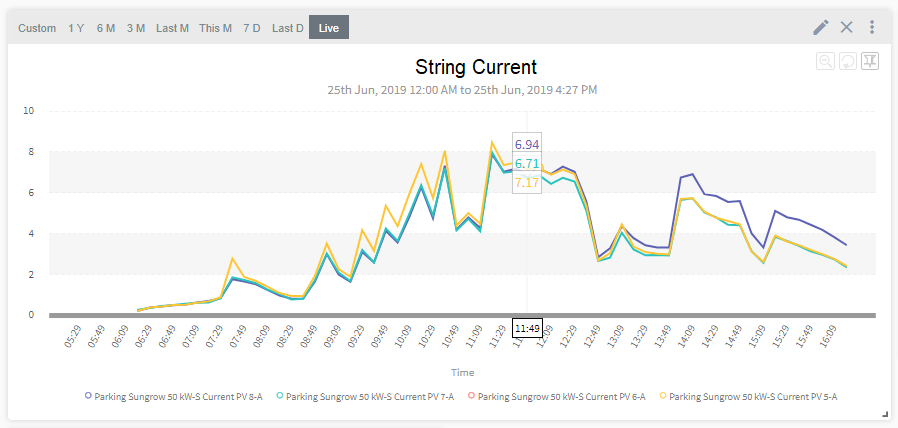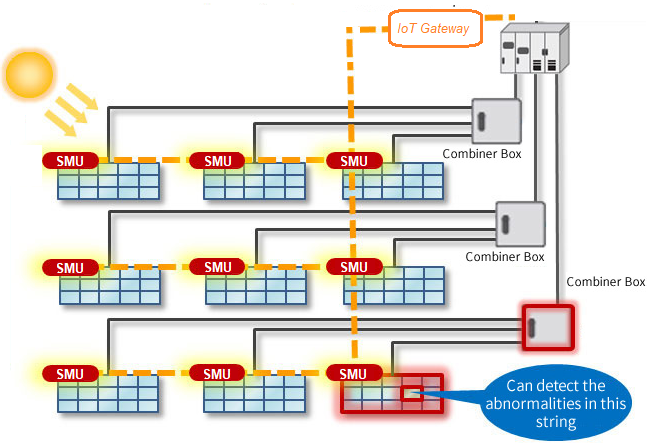Photovoltaic String Monitoring Practices- Inverter Vs Traditional SMB’s
2 ways to get string-level data in a solar system and the advantages of having it!
With gaining popularity for renewable energy production, solar PV is leading the market in many countries around the world. With mass implementation, EPCs and system owners are trying to find more and more ways to keep their systems running at the optimal performance. One of the critical ways to keep a track of your solar PV panels and identify the faulty component in the shortest time possible is string monitoring.
String monitoring is a concept where all the strings of solar PV panels [individual solar PV panels in some cases] are monitored to track the output and performance of each unit along with the overall output and performance of the system. String monitoring can be done in 2 ways:
- Using solar inverter based string monitoring
- Using a 3rd party string monitoring system

Solar Inverter based String Monitoring
In this case, the solar inverter allows the user to provide string level inputs and then monitor it along with other parameters. These inverters generally have a few MPPT inputs and each MPPT input consist of multiple strings. Hence, with 1 MPPT, the user can monitor multiple strings individually as well as the combined production. Such. A system is mostly available with inverters with a capacity greater than 50 kWp. A few brands like SMA, Sungrow, Huawei etc. provide string monitoring in the many of inverter models. Having a string monitoring feature in the inverter itself has two advantages:
- It saves some cost in installing additional string monitoring system
- It reduces the complexity of the overall design as all the strings are directly connected to the inverter
3rd Party Based String Monitoring
In case the inverter is less than 50 kWp capacity or the overall design of the plant is such that the string monitoring could not be available in the inverter itself, the user can install a 3rd party string monitoring system. The function of the string monitoring box is exactly the same as the one inside the inverter. But only the design is different. All your solar PV strings come to this string monitoring box and then they are combined to provide an output to the MPPT input of the inverter. This string monitoring box acts as an independent unit and can send data to the monitoring portal using MODBUS protocol just as the solar inverters.
Advantages of a String Monitoring System
Now, it is also important to understand the advantage of a string monitoring system. As you know that each string in a solar PV system is a combination of multiple solar PV panels connected in series.
– Prevent even minor yield losses- Now let’s say you’ve installed a 500 kWp solar PV plant. Also, there are strings with 10 solar PV panels connected in series. On a fine sunny day, one of the PV panels in one of the strings got damaged and stopped producing. Or maybe there is a loose connection in this string. If you see the overall picture, you’ll only see a small dip in production and you’ll not be able to derive a good reason for that mild reduction. It may be because of the weather conditions or due to some temporary shadowing etc. Hence, you’ll find no reason to go and get the system checked. Because of that, 10 panels in the system are now not producing anything and that is a loss of almost 15 units per day. Having a string monitoring system allows you to track the correct reasons for the decline in production and fix them as soon as possible.
– Precise localization of the problems: Another reason why string monitoring is important is to identify the exact point of failure in the solar PV system. Consider you have a system of 1 MWp capacity and the solar PV panels are installed in a huge area. If there is no way to identify exactly which string has failed and the production has gone down, it might take days for the maintenance team to identify the string and fix it. That means a huge cost of maintenance along with a continuous energy loss. Having string monitoring system in the plant eliminates both these problems and allows the maintenance team to track the correct location of the problem and fix it in the minimum time possible.
– Pro-active maintenance: There are multiple types of defects and faults that can exist in a solar PV panel that are not easily detected by human eyes or before making a purchase. These defects cause severe damage to the overall system design and energy production. Following are a few defects:
- Microcracks: can happen due to vibrations in the panels or mishandling while installation. These are not visible to the naked eyes but can cause serious loss of energy production over many years.
- PID: Potential Induced Degradation happens in the solar crystalline PV panels caused by stray currents and can cause efficiency loss of up to 30%. This defect can also take up to months to detect.
Considering the above points, it is clear that string monitoring is an important measure to keep a track of the solar PV system and also to identify key issues with the solar PV panels.

